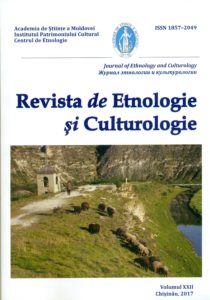The early ethnic history of Bulaestian dialect speakers
through the issue of asynchronous VN-reflexes in the
Ukrainian dialectal continuum
The early ethnic history of Bulaestian dialect speakers
through the issue of asynchronous VN-reflexes in the
Ukrainian dialectal continuum
Author(s): Aleksey A. RomanchukSubject(s): History, Language and Literature Studies, Essay|Book Review |Scientific Life
Published by: Institutul Patrimoniului Cultural al Academiei de Științe a Moldovei
Keywords: VN-reflexes; dialectology; ethnology; history; Ukrainians; Moldova; Middle Ages
Summary/Abstract: The asynchronous VN-reflexes (Bulaestian /ч’iндреǐ/ ‘generous’ presents a clear example) in the Ukrainian dialects were in depth considered by P. E. Hritsenko and were clearly explained as a “phonetic polonism”. Well, the question is when and how this phenomena appeared in the Bulaestian dialect? We should consider the following facts here: 1) in general, polonisms are presented in the Bulaestian dialect by some early examples mainly; 2) the great part of polonisms known in other Ukrainian dialects are absent in the Bulaestian one; 3) Polish szczodry ‘generous’ do not demonstrate any VN-reflex; 4) we see some analogies (шандрий, чандрий) in some other south-western Ukrainian dialects; 5) it is unlikely that these analogies appeared independently at all (at least that concerns the forms чандрийand чeндрий); 6) anyway, it is obviously impossible to get the Bulaestian variant neither from чандрий (conversely, чандрий appeared as a result of /e/ to /a/ transition from чeндрий), nor, more over, from шандрий (as it demonstrates, in addition, a loss of /ч/ from the initial /шч/). So, the phonetic form /ч’iндреǐ/ is an archaic one and reflects some early times of ethnic and linguistic history of Bulaestians.
Journal: Revista de Etnologie şi Culturologie
- Issue Year: XXII/2017
- Issue No: 2
- Page Range: 68-71
- Page Count: 4
- Language: English

